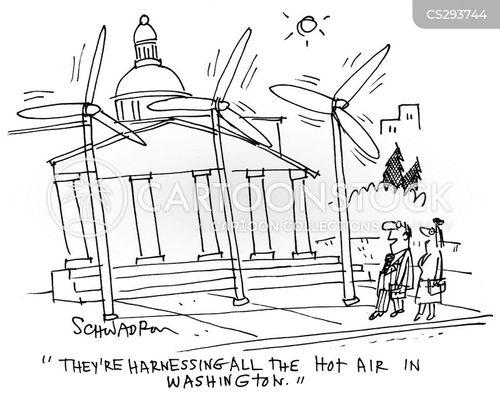In today’s Thursday briefing, The New York Times turns its focus to the escalating political debates surrounding air conditioning – a topic once considered purely a matter of comfort but now at the heart of broader discussions on energy policy, climate change, and economic equity. As rising temperatures and energy demands strain infrastructure, policymakers and stakeholders grapple with how to balance public health needs, environmental responsibilities, and regulatory frameworks. This report unpacks the latest developments and key players shaping the future of cooling in an increasingly warming world.
Thursday Air Conditioning Debate Intensifies Amid Energy Concerns
As summer temperatures soar, the debate over air conditioning use has reached new heights, exposing the tensions between public comfort and energy sustainability. Utilities and environmental groups warn that increased reliance on air conditioning could push already stretched electrical grids to their limits, raising the specter of blackouts. Meanwhile, consumer advocates emphasize the necessity of cooling for health and productivity, particularly in vulnerable communities. The conversation is no longer merely about comfort but has evolved into a critical question of managing peak electricity demand without compromising safety or the environment.
Policy proposals currently on the table reflect a range of strategies aimed at balancing these competing interests. Key measures being discussed include:
- Incentivizing energy-efficient AC units through rebates and tax credits
- Time-of-use pricing to encourage off-peak use
- Public awareness campaigns on responsible cooling habits
Below is a snapshot of the projected energy impact from widespread AC use during peak hours:
| Hour | Projected AC Energy Demand (MW) | Grid Capacity (%) |
|---|---|---|
| 2 PM | 12,500 | 85% |
| 5 PM | 16,400 | 98% |
| 7 PM | ||
| 7 PM | 17,200 | 103% |
As shown, the grid capacity surpasses 100% at 7 PM, indicating a potential overload risk during peak cooling hours. This highlights the urgency for effective demand management and energy efficiency measures.
Regulatory Challenges and Policy Shifts Shape Cooling Industry Future
As governments worldwide tighten environmental regulations, the air conditioning industry faces mounting pressure to innovate while navigating an increasingly complex policy landscape. Stricter emissions standards and phase-outs of hydrofluorocarbon (HFC) refrigerants are driving manufacturers to adopt greener technologies. Yet, the transition is far from uniform – regional disparities in policy enforcement and incentives create challenges for global supply chains and product strategies. Industry leaders are calling for clearer federal guidelines to avoid market fragmentation and foster sustainable growth throughout the sector.
Key factors reshaping the market include:
- Increased mandates to improve energy efficiency and reduce carbon footprints
- Shifts in trade policies affecting component sourcing and pricing
- Growing consumer demand for eco-friendly, smart cooling solutions
- Investment in research and development to meet evolving compliance standards
| Region | Regulatory Focus | Impact on Industry |
|---|---|---|
| North America | Phasing out HFCs, energy efficiency | R&D investments, market realignment |
| Europe | Stringent carbon emission targets | Increased compliance costs, innovation push |
| Asia-Pacific | Rapid urbanization, varied policy enforcement | Growth in demand, supply chain challenges |
Experts Urge Sustainable Solutions to Balance Comfort and Climate Goals
Amid rising global temperatures and escalating energy demands, specialists highlight the critical need for innovative approaches that preserve human comfort without compromising environmental targets. They advocate for the integration of advanced technologies such as smart thermostats, geothermal cooling, and adaptive building materials that naturally regulate indoor climates. Simultaneously, urban planners emphasize green infrastructure to reduce heat island effects, thereby lowering overall cooling requirements across metropolitan landscapes.
Leading voices in climate and energy sectors recommend prioritizing policies that encourage:
- Energy-efficient air conditioning systems with lower global warming potential refrigerants
- Incentives for retrofitting older buildings to improve insulation and reduce heat loss
- Community awareness programs promoting behavioral changes during peak heat periods
- Investment in renewable energy sources dedicated to powering cooling infrastructure
| Proposed Solutions | Climate Impact Reduction | Implementation Timeline |
|---|---|---|
| Phase-out of HFC Refrigerants | Up to 40% | Within 5 years |
| Widespread Smart Thermostat Adoption | 25-30% | 3-7 years |
| Urban Green Space Expansion | To Wrap It Up
As the debate over air conditioning policy unfolds, it is clear that this issue extends far beyond comfort-touching on energy consumption, environmental impact, and social equity. Policymakers and stakeholders continue to navigate a complex landscape shaped by technological advancements and climate challenges. Staying informed on these developments will be essential as communities and governments seek sustainable solutions. For ongoing coverage, The New York Times will keep you updated on the evolving politics surrounding air conditioning and its broader implications. |
